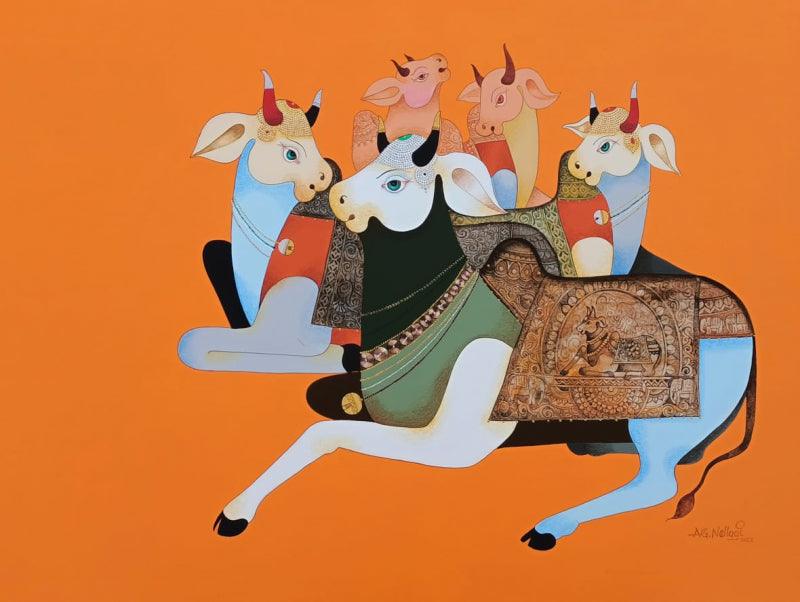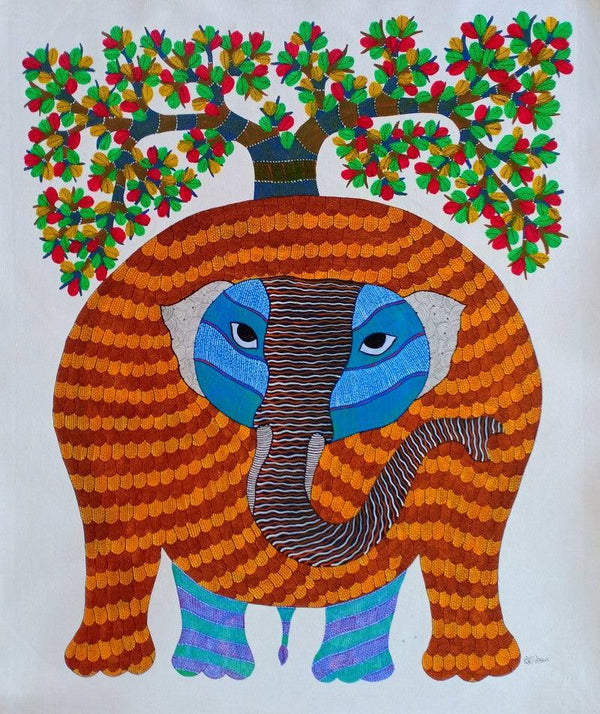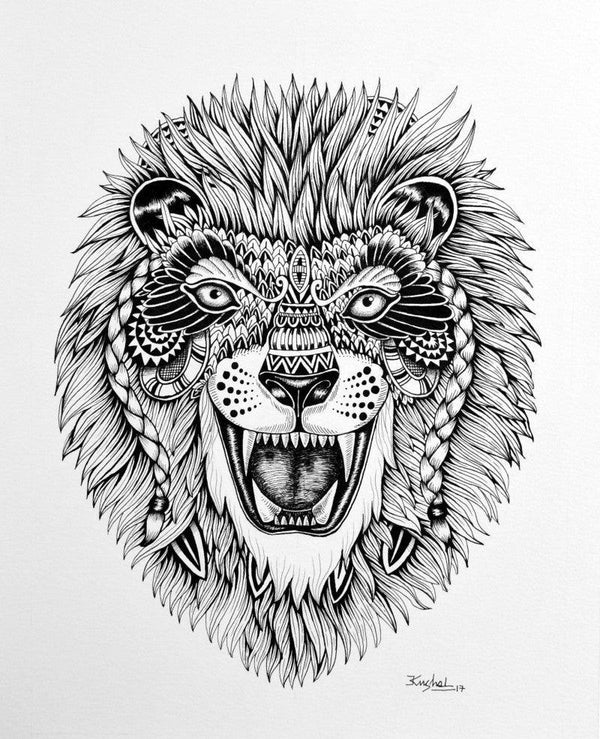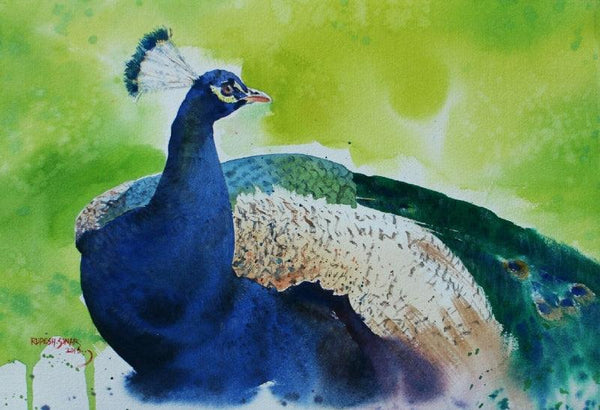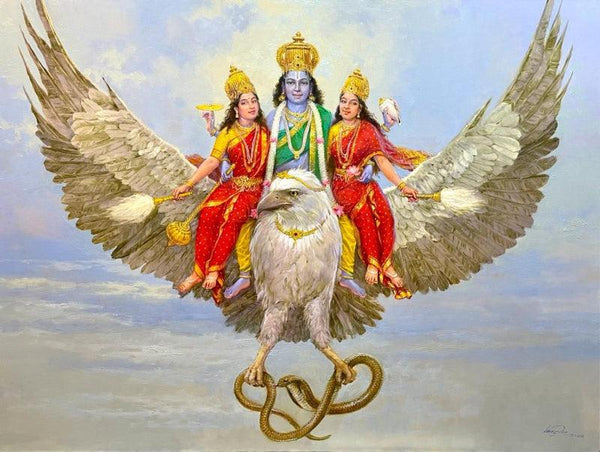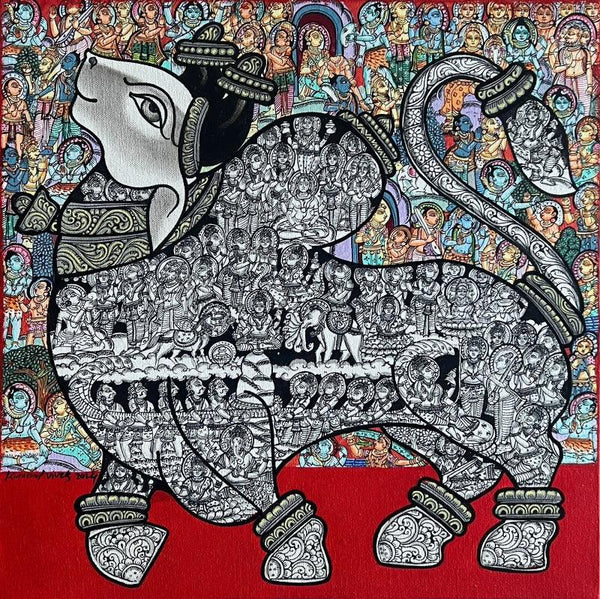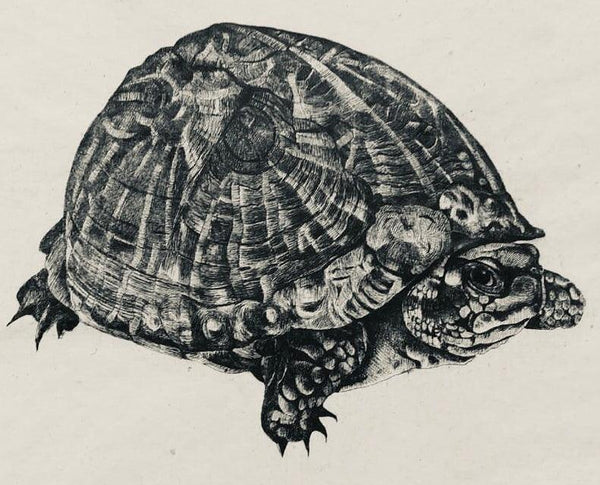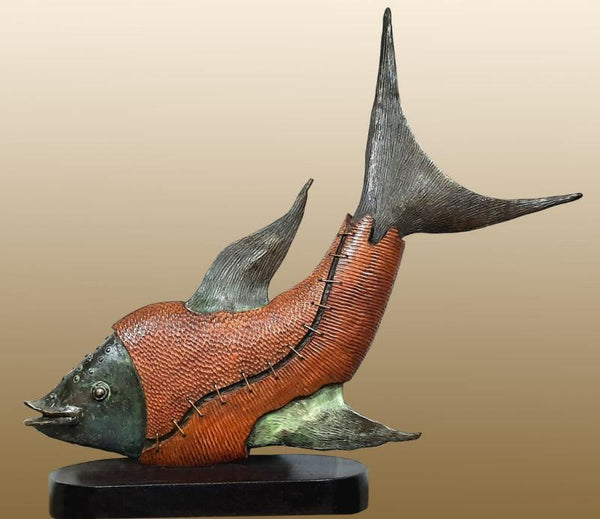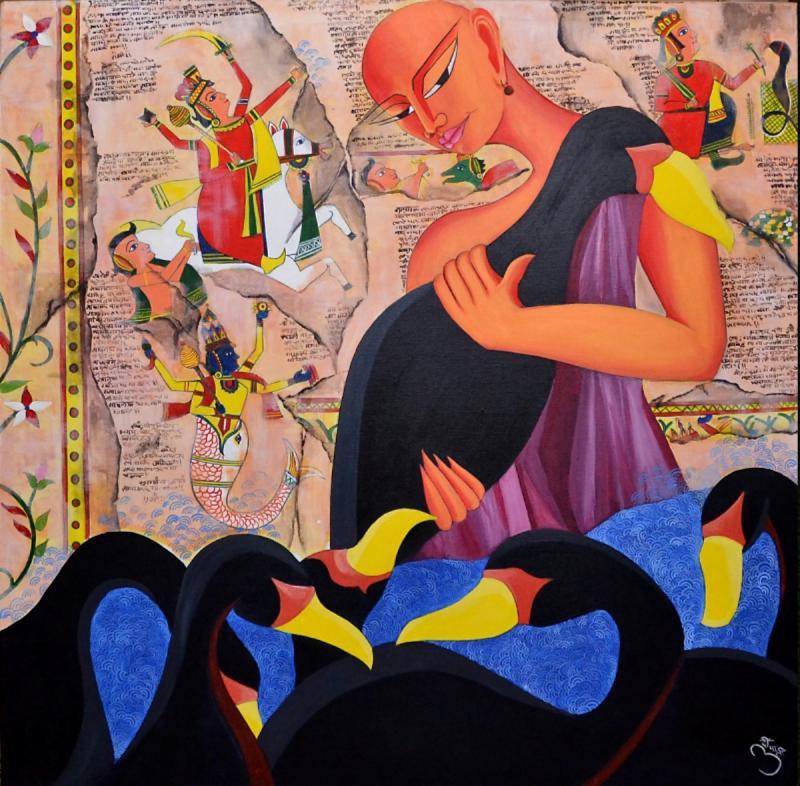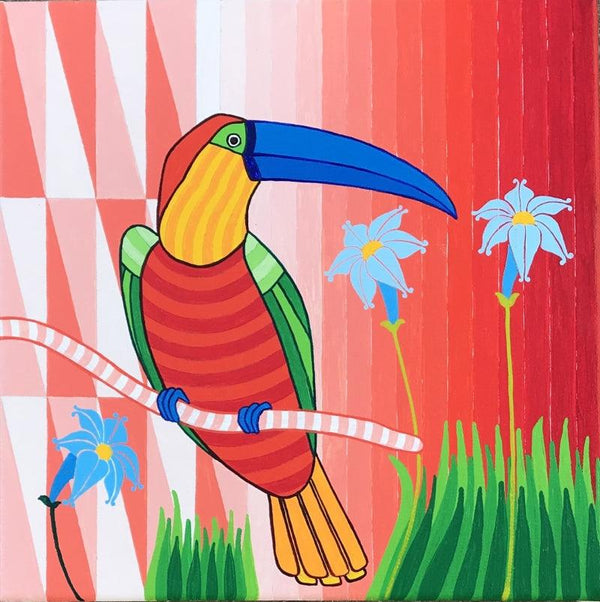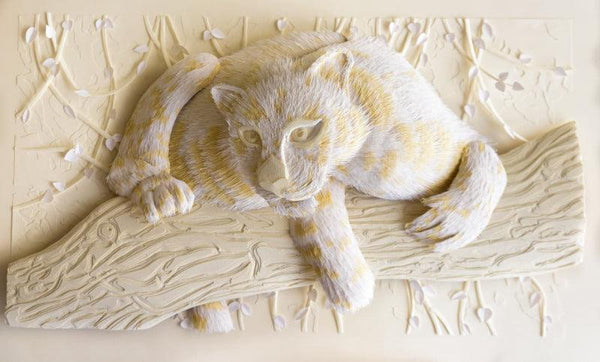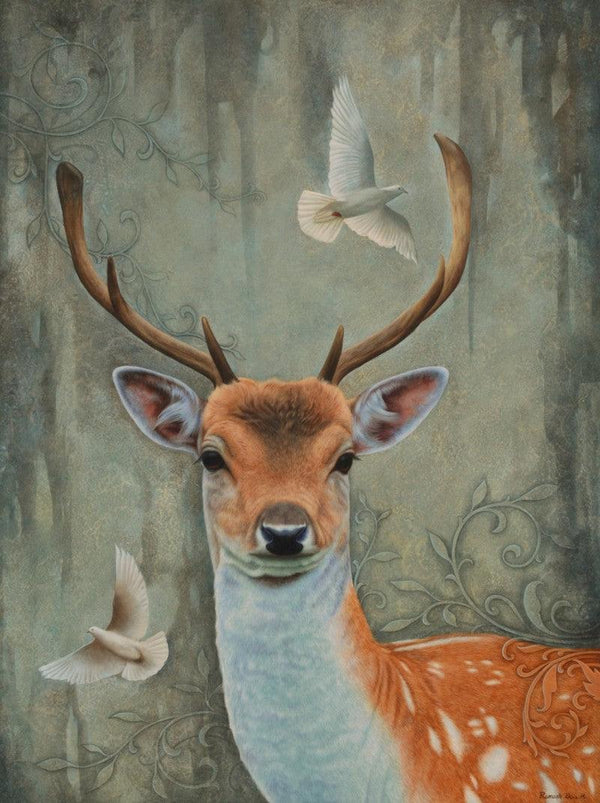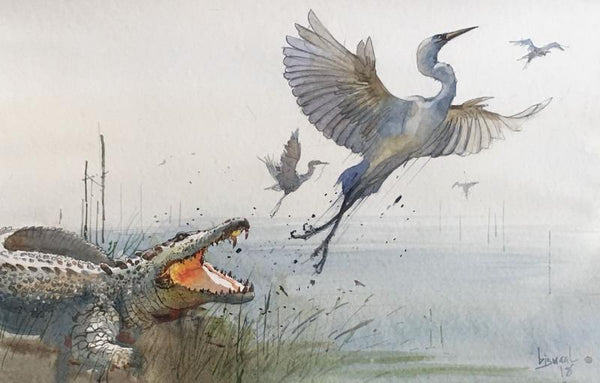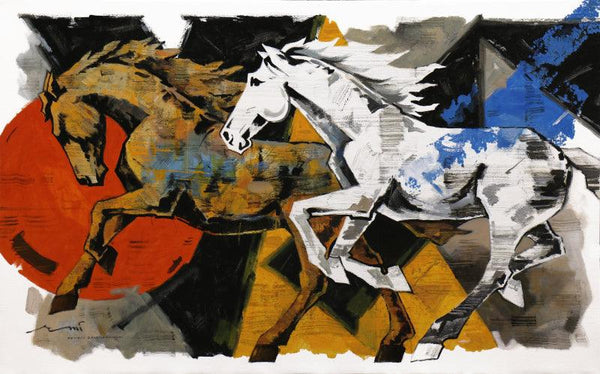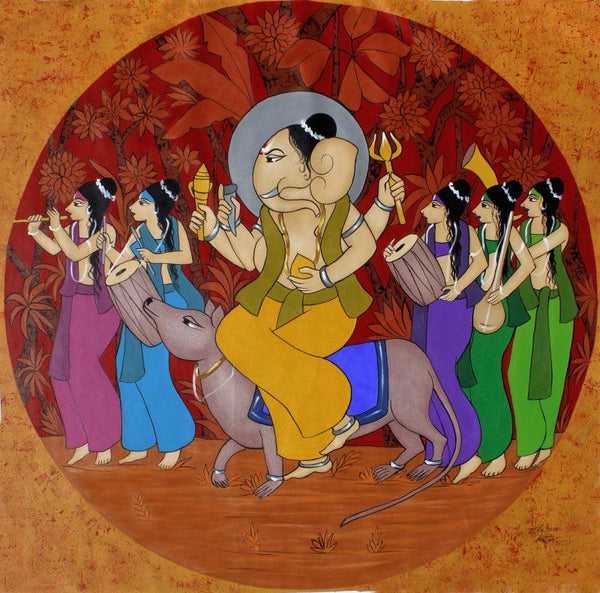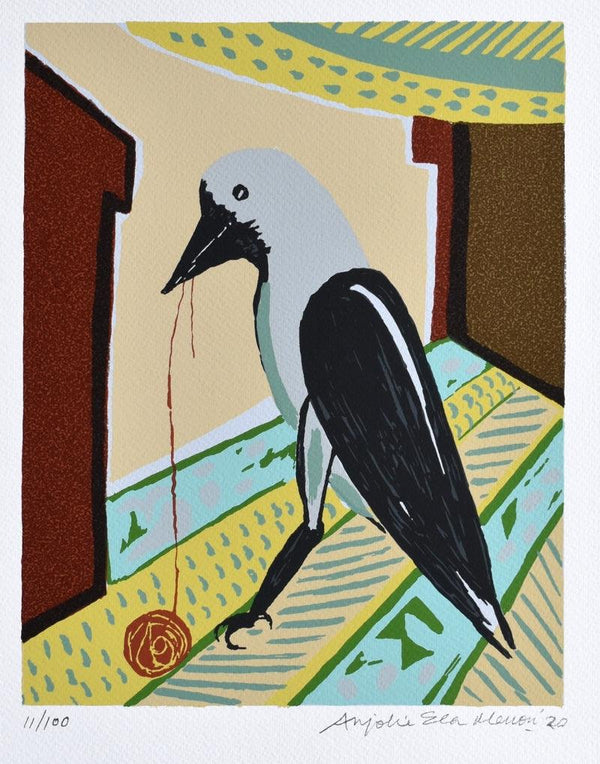Indian art and culture are deeply intertwined with spirituality and symbolism, with animals holding special symbolic meaning for religious or artistic works in various forms such as sculptures, paintings, temple carvings and textiles. Animals frequently depicted in Indian artwork include those who symbolize aspects of divine existence or nature itself - here is a comprehensive list of sacred animals frequently depicted:
1. Cow
Symbolism: The cow is widely recognized as an emblem of fertility, motherhood and earth's bounty - embodying Kamadhenu goddess in various depictions from temple carvings to paintings and sculptures alongside Krishna or Shiva deities. Its presence often appears alongside deities from Hindu mythology such as Shiva or Krishna.
2. Elephant
Symbolism: have become symbols for Ganesha, the remover of obstacles and god of wisdom. Additionally, elephants represent strength, power and royal authority - these characteristics often seen portrayed prominently in temple architecture, miniature paintings or royal processions.
3. Lion
Symbolism: Lions symbolize power, courage and protection. They are often depicted with Durga as she rides one while out on battle missions - another association can be made to Durga riding on its back while depicted riding it herself!
Depictions: They can often be found depicted riding them in temple sculptures especially those found in South Indian temples as well as paintings featuring Durga herself.
4. Peacock
Symbolism: The peacock symbolizes beauty, grace, and the cycle of life. It serves as Kartikeya - god of war - as his vehicle. Depictions: Peacocks can often be found depicted in Mughal and Rajput paintings as well as temple decorations.
5. Serpent (Naga)
Serpents symbolize fertility, protection and the underworld. They are associated with Shiva and Vishnu and often depicted with their serpent canopy.
Depictions: Serpents may be found depicted on temple carvings found throughout South Indian temples as well as statues around temple tanks.
6. Garuda
Symbolism: Garuda is the divine eagle and vehicle of Vishnu, representing speed, martial prowess, and divine protection. Depictions: Found frequently in Vaishnavite temples as well as illustrated manuscripts
7. Monkey
Symbolism: Monkeys are considered sacred as they are associated with Hanuman, Rama's devoted servant and symbol of strength, loyalty, and devotion.
Depictions: Monkeys can often be seen depicted on temple carvings depicting Ramayana story panels.
 8. Bull (Nandi)
8. Bull (Nandi)
Symbolism: Nandi, the sacred bull, is Shiva's mount, symbolizing strength, virility and righteous behavior.
Depictions: Prominently displayed at Shiva temples as well as through temple architecture and art forms. Intendancy
9. Tortoise
Symbolism: The tortoise is associated with Vishnu's Kurma avatar and stands as an embodiment of patience and stability for supporting the universe. Depictions can often be seen on temple floors in mandalas (cosmological diagrams).
10. Fish
Symbolism: Fish symbolize fertility and abundance, while their association with Vishnu's Matsya avatar, representing salvation and preservation is symbolic. Depictions: Fish often appear as temple carvings depicting Vishnu and his avatars.
Symbolism: The swan symbolizes purity, wisdom, and spiritual discernment; it is linked with Saraswati as the goddess of knowledge. Depictions: Swans are often featured in paintings, sculptures, and temple carvings depicting Saraswati iconography.
12. Parrot
Symbolism: The parrot is often depicted as a sign of love, associated with Kamadeva - the god of passion.
Depictions: Mughal and Rajput miniature paintings as well as temple carvings feature this creature.
13. Tiger
Symbolism: Tigers represent power and ferocity and have long been linked with Durga. She can often be found depicted riding one as well. Depictions: They often feature as part of paintings and sculptures of Durga. (Deer are another popular animal symbol).
14. Deer
Symbolism: Deer symbolize gentleness and are often depicted in forest scenes or as the mount of Vayu, the wind god. They can also be found depicted as miniature paintings and temple carvings.
Depictions: miniature paintings and temple carvings.
15. Crocodile (Makara)
Symbolism: The makara, a mythological sea creature associated with water deities such as Ganga and Varuna, can often be seen depicted as part of temple sculptures; particularly as part of temple spouts or pillars.
16. Horse
Symbolism: The horse symbolizes speed, power and mobility and is associated with Ashvins - twin horsemen gods who represent speed and mobility.
Depictions: Horses often feature in sculptures depicting royal processions or deities.
17. Rat (Mushika)
Symbolism: Ganesha uses his vehicle - the rat - as a representation of his power to overcome obstacles while embodying traits like resourcefulness and adaptability.Teatrul This motif can be found throughout Ganesha iconography including sculptures and paintings depicting him.
18. Crow
Symbolism: Crows are often considered messengers and associated with Shani (Saturn), representing time and change. Depictions include temple carvings and folk paintings depicting them.
Indian art's depictions of sacred animals serve to highlight the intricate relationships between nature, mythology, and spirituality in Indian culture. Their representation serves both aesthetic purposes as well as communicate deep symbolic meanings from Indian mythology and religiosity.


